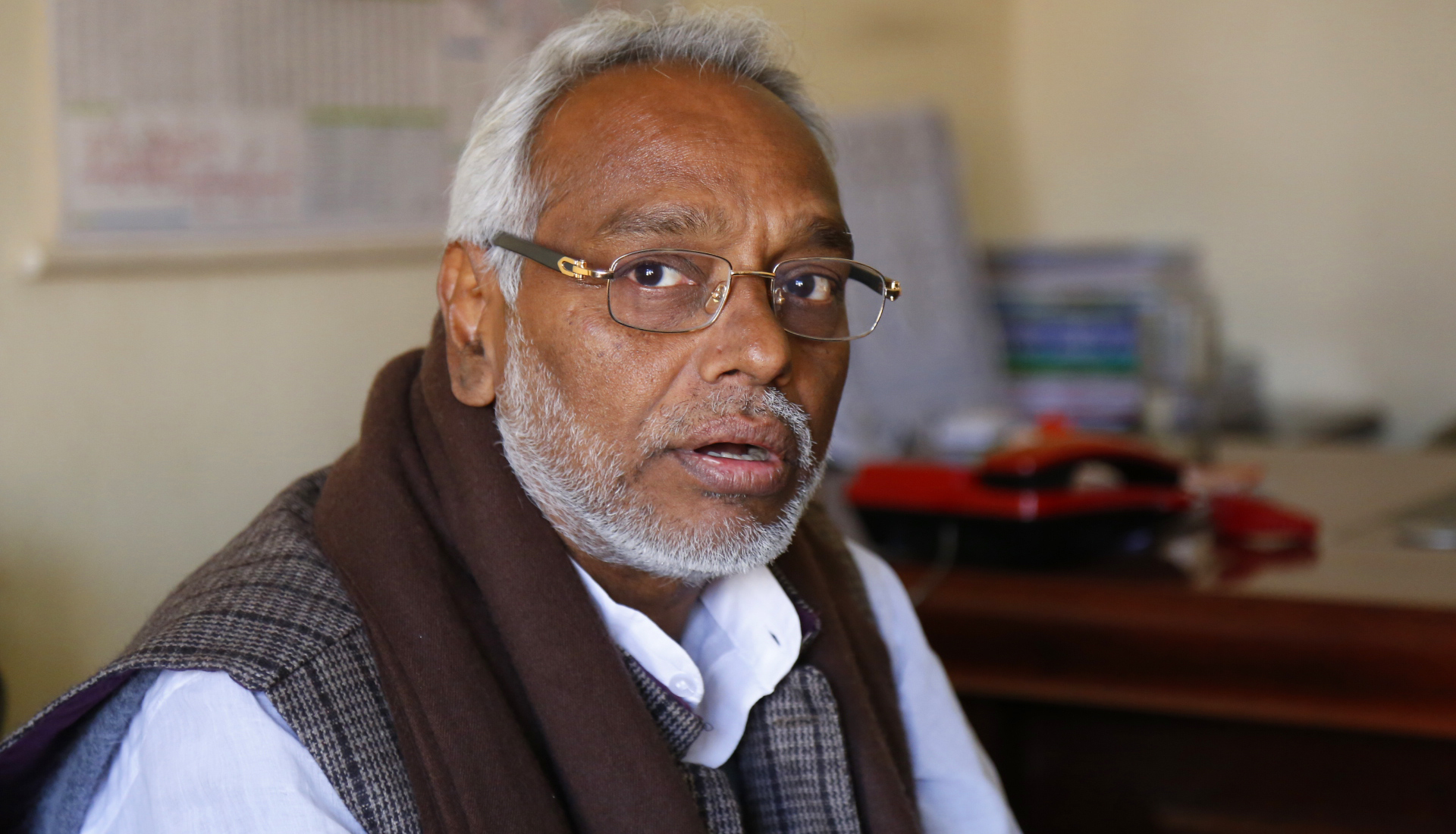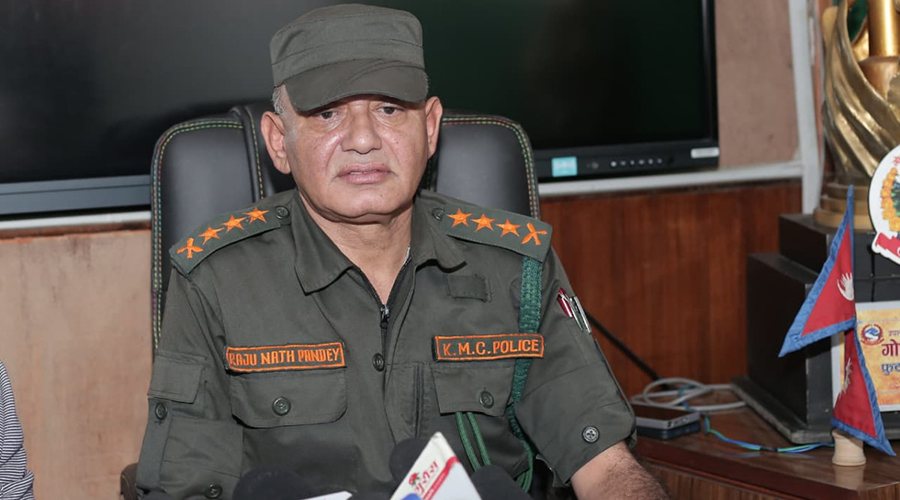In the first week of February, Nepal was grappling with a blockade. Sympathisers of the Madheshi Morcha, an alliance of four Madhesh-based parties, were still determined not to allow any cargo to pass through the Miteri Bridge in Birgunj, Nepal’s trading lifeline with India.
Rajendra Mahato, president of the Sadbhavana party, then talked to the media on Thursday, February 4. Mahato, who had, at the peak of the Madhesh Movement, said he wants to cut off Kathmandu’s supplies, made a U-turn.
“The shutdown continuing at Birgunj has caused hardships to people, but has failed to pile pressure on the KP Oli government,” said Mahato. “So, why keep causing hardships to people. Why keep a customs point shut, while other customs points have been operating?”
Just a day after Mahato’s statement, the blockade was effectively over, even before the Morcha, which claimed to be behind it, announced it.
Just three years ago, if anyone had said the Madhesh will erupt over the new constitution, and Rajendra Mahato will be the face of the protesters, few would have believed it, says a Morcha leader. In November 2013, many had written him off after losing his Sarlahi-4 Constituent Assembly seat to Mahendra Raya Yadav of the Tarai Madhesh Sadbhavana Party Nepal, that too with a margin of 2,744 votes. They believed his political career was over, especially as the next election was uncertain; no one could say how much time it would take to pass the constitution, and then hold fresh elections.
This was not the first time that the man from Malangawa had come back stronger after being pushed to the wall. Ever since he came to Kathmandu in 1976, Mahato’s success graph has gone through many troughs, but most of the time he has managed to devise a plan that trumps his rivals, and puts him on top. That is because he knows that the centre of power changes according to time, and changing the game plan accordingly is the only way to move forward.
Mahato knows that the centre of power changes according to time, and changing the game plan accordingly is the only way to move forward.
After the defeat, Mahato withdrew from public life for a while. According to one of his aides, he was working on his biography. But the four-time minister was actually plotting his return to power.
Shiny white hair, short prickly beard, a receding hairline and rectangular golden rim glasses with rounded edges, Mahato’s face is without doubt the most recognised ‘Madeshi’ face in Kathmandu.
Mahato, according to official records, was born on November 19, 1958 in Babargunj-8, Sarlahi.
“The tole was called Pahadiya not because the hill people (the Pahades) were in majority there. It was because a Pahade family used to live there.”
“My father (Khobahari Mahato) was an accountant (lekhandas),” he remembers. “We lived in Babargunj, there was a neighbourhood called ‘Pahadiya Tole’,” Mahato remembers fondly. “The tole was called Pahadiya not because the hill people (the Pahades) were in majority there. It was because a Pahade family used to live there,” he says with grin. While growing up, he saw that the most powerful individuals in the district were the CDO, and the government lawyers, who were all Pahades.
“My dad wanted me to be a doctor. That is why he sent me to Kathmandu,” he says.
But after coming to Kathmandu, he found out that medicine was not his cup of tea. It did not give the exhilaration that power, the ability to influence, gives. So he studied law at Nepal Law Campus, where he says he completed his Bachelors. After realising that he would have a better shot at landing the CDO post, he studied Public Administration, he says.
After coming to Kathmandu, Mahato says he joined a travel agency in Durbarmarg. As part of his job, he would make regular trips to the airport. “One day a foreigner asked me a strange question,” he recounts.
“Are you Indian? I saw people like you at the Delhi airport.”
“I said no, I am a Nepali. But he would not believe me.”
“Look around, I don’t see any one like you here,” the foreigner had said.
“I took the incident to heart, and decided to do something about it. I somehow managed to take charge at the airport’s porter service, and recruited Madheshis from my village to work there,” he says.
Within a few months, any foreigner, who would land at the airport, would see the ‘real Madheshis’. Mahato didn’t meet the inquisitive foreigner again, who would have been pleasantly surprised on seeing a good number of Madheshis at the airport. It was Gajendra Narayan Singh (the founder of Sadbhavana), who took notice.
“Gajendra babu was going to Varanasi when he saw what I had done at the airport.” I told him, “Gajendra babu, I have done things inside the airport that you want to do outside of it.”
After the second CA elections, Mahato had a very limited role. But he was looking for an opportune moment to revive his political career. After the constitution was passed, Mahato got what he was looking for. As one of the key leaders of the Morcha, Mahato projected himself as the messiah of the Madhesh, and made statements that would make radical Madheshis happy. On one occasion, he said, “Kathmandu ko dana pani banda gari dinchuu (I will cut off Kathmandu’s lifeline).
He made sure that he stayed in the Madhesh until the protests peaked.
The projection seemed to have worked. Other Morcha leaders would also point at Mahato whenever they received requests to call off the blockade. “It is Rajaendra Mahato, who is enforcing the blockade,” Morcha leaders would say.
On December 26, 2015, Mahato, as part of his strategy to occupy the Madhesh, was leading protests in Biratnagar. As protesters tried to stop traffic from India, police intervened. Mahato was hit hard on the head, and rushed to the hospital.
“That day the intention was clear. They wanted to kill me,” he says. “But I survived; I believe I got a new life after the incident.”
“The intention was clear. They wanted to kill me,” he says, recalling the incident. “But I survived; I believe I got a new life after the incident.”
This was yet another pushing-to-the-wall moment for Mahato, who was hospitalised for weeks. He was even airlifted to Delhi, where he received treatment. This time also, he came out with a plan to get back better and stronger.
After cross-border trade resumed in Birgunj following months of blockade, Madheshi Morcha stands divided, with Mahato and his party getting all the brownie points.
In Birgunj, where Upendra Yadav’s Forum Nepal is dominant, Mahato made sure he was seen with the blockade enforcers so that locals would believe he was the one dedicated to the Madheshi cause.
That Mahato never agreed to review Morcha’s agitation, until recently, is also an indication that Mahato was in a bid to make his presence felt in Birgunj, which had come to symbolise the Madheshi movement after all other border points remained open soon after the ‘blockade’ was announced (by the Morcha).
Sources say Upendra Yadav tried to turn the tables on Mahato for being the one responsible for the blockade, after the blockade became unpopular with the locals. But Mahato understood this, and retaliated, that too in a big way. Call it Mahato’s stratagem: He has the symapthy of Madhesh and Kathmandu both, now.
So what does Mahato want now? He has announced that he will not become a minister again. “I have said I will not become minister, but that does not mean I will not become the deputy prime minister, chief minister, or even Chief Minister.”
One of his close aides asks, “Do you know the relationship between Lalu and Nitish in Bihar? They fought each other all the time. But when they formed the grand alliance, BJP was wiped out.”
“Let’s say Mahatoji has a similar relationship with KP Oli. So the posts he is talking about is not beyond his reach.”

























